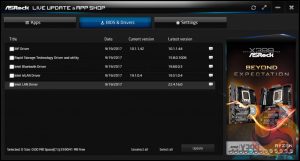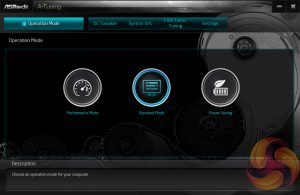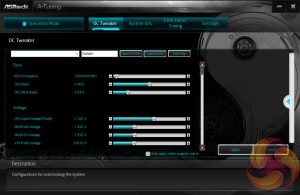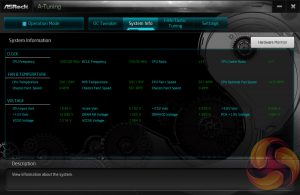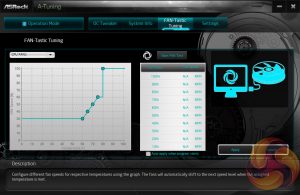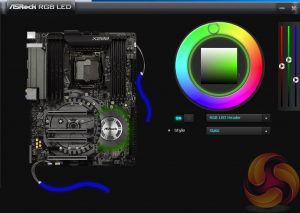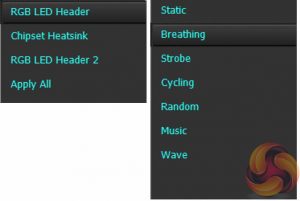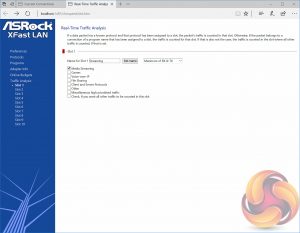ASRock’s App Shop provides the dual role of serving out ASRock’s own software and approved third party software, but also includes a MSI Live Update-style function which scans for certain BIOS and driver versions and informs the user when a newer version is available. It’s reasonably useful for both of its provided functions and isn’t too intrusive, but does pop up the occasional notification in Windows 10.
A-Tuning, ASRock’s equivalent to ASUS AI Suite, Gigabyte EasyTune and MSI Command Centre, allows you to overclock on-the-fly and tune the fan speeds with the ASRock FAN-Tastic tuning. It’s a reasonably well polished piece of software, is light on system resources and not very intrusive.
The ASRock AURA RGB LED software allows you to individually tune the main LED regions of the motherboard which are the Chipset heatsink (onboard LEDs) and two RGB LED headers (both optional and not included). It works by selecting the colour on the outer ring first, then the inner ring after and then you can pick the style from the drop down menu, there are currently 7 modes as shown above.
Each zone can be set individually or you can apply the same setting to all four zones. We tested ASRock’s RGB LED system with CableMod strips and it functioned without issue. There’s definitely room to add more functionality and features but sometimes the simple implementation is the best.
ASRock has been less active in its promotion of XFast LAN software which is effectively a re-badged cFos traffic shaping software with very little amendment. It's fashionable to have this kind of packet prioritisation software – ASUS has GameFirst IV and MSI has Network Manager which both vendors market a fair amount. However, ASRock and Gigabyte hardly bother and we think it's the best approach.
Consumer reception to this type of packet prioritisation and traffic shaping software has never been particularly hot and rightfully so. Intel, Killer, Realtek and Qualcomm networking drivers are lightweight and extract maximum performance out of a Gigabit connection. Plus with increasingly fast home broadband connections the need for this type of software is diminishing since most internet connections have enough bandwidth to support multiple services running in parallel.
Any significant form of traffic shaping, quality of service and bandwidth sharing is likely best implemented at the router or switch level.
Be sure to check out our sponsors store EKWB here
 KitGuru KitGuru.net – Tech News | Hardware News | Hardware Reviews | IOS | Mobile | Gaming | Graphics Cards
KitGuru KitGuru.net – Tech News | Hardware News | Hardware Reviews | IOS | Mobile | Gaming | Graphics Cards



